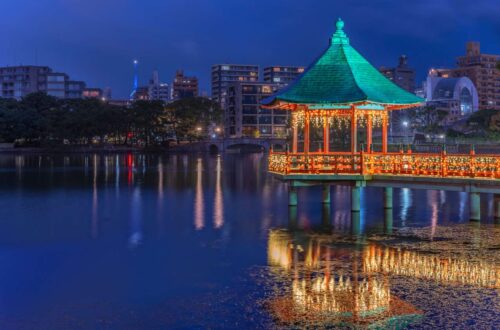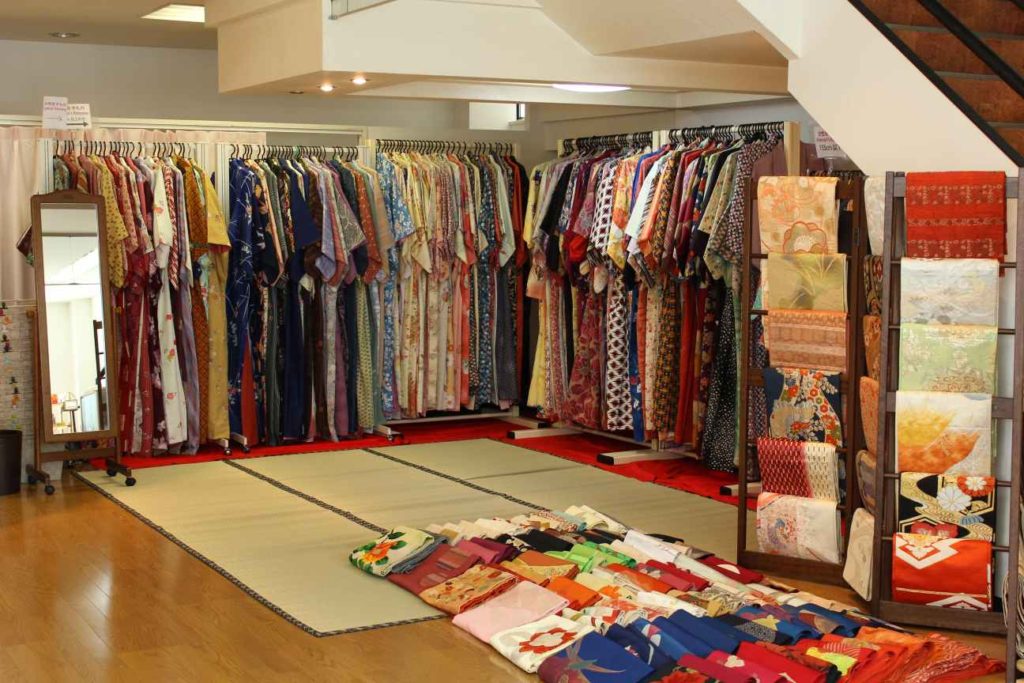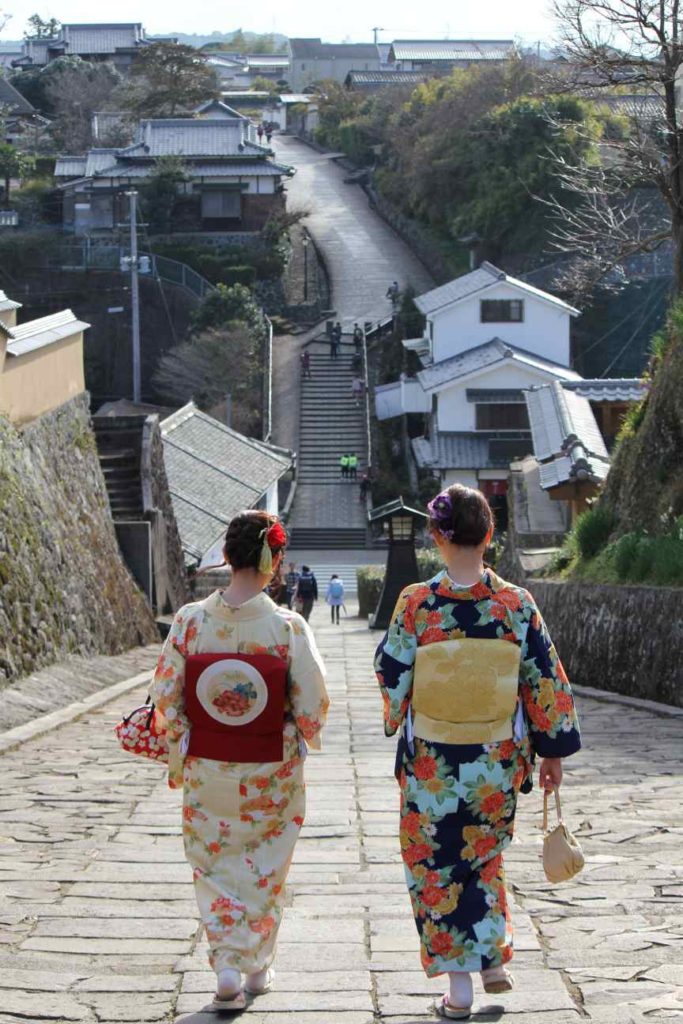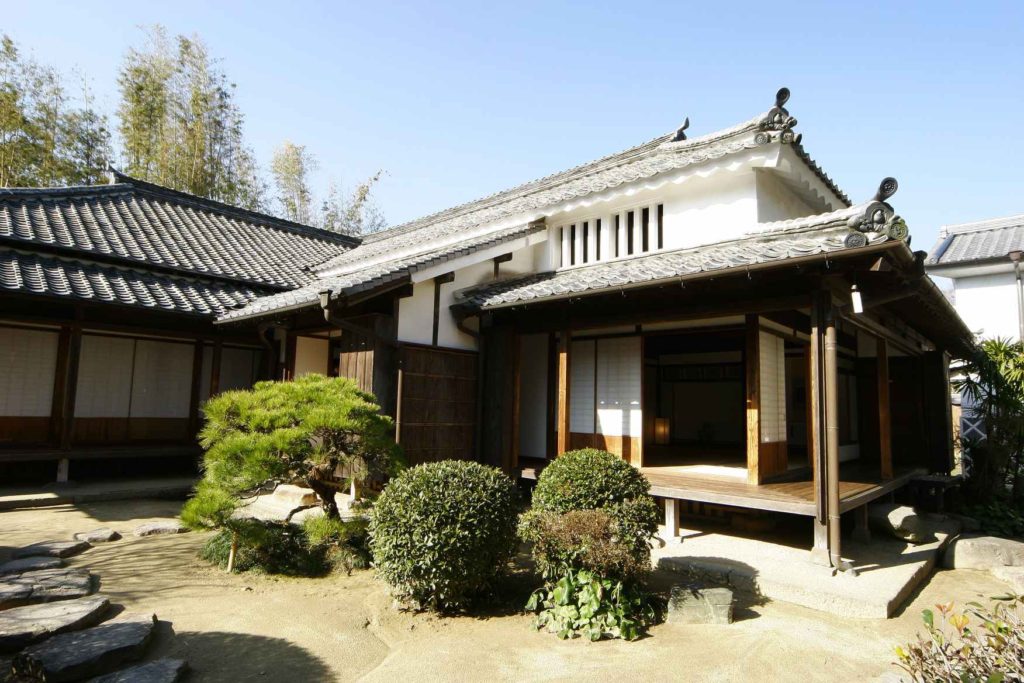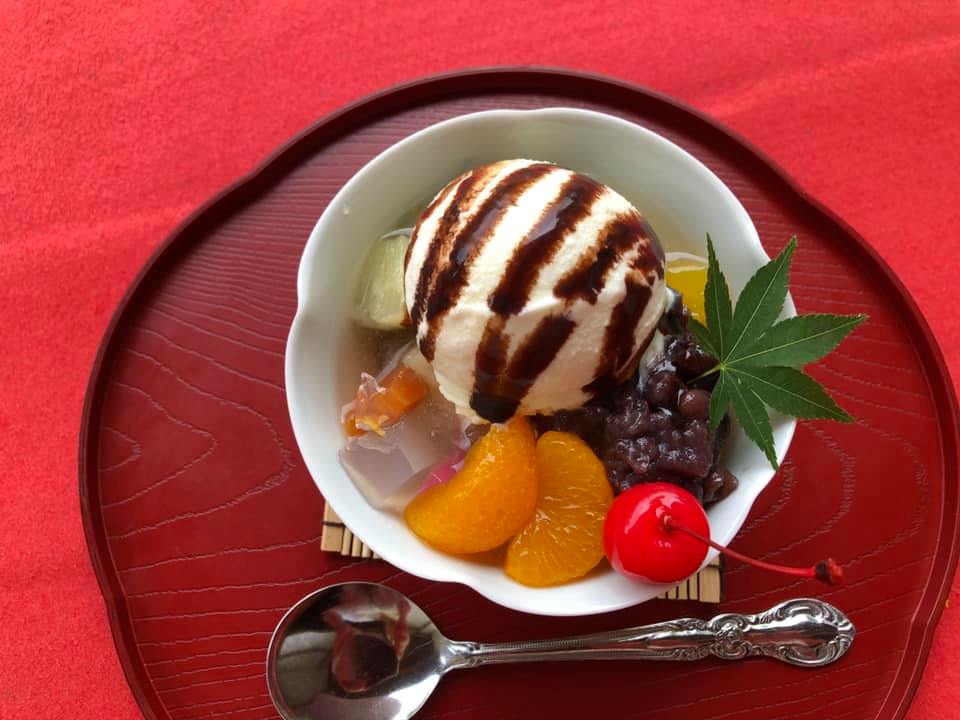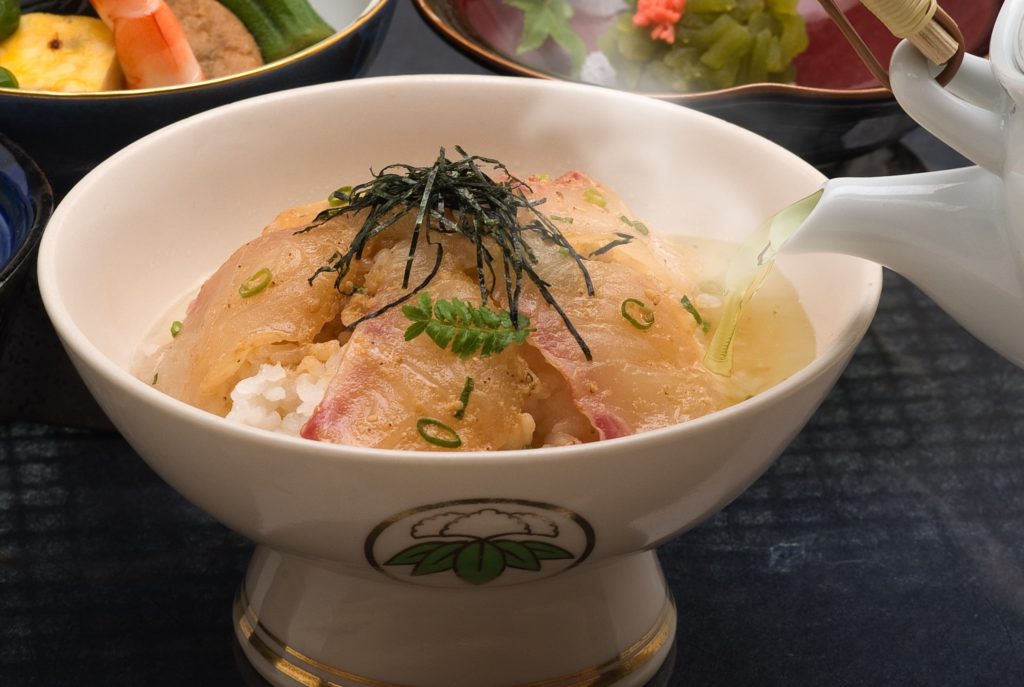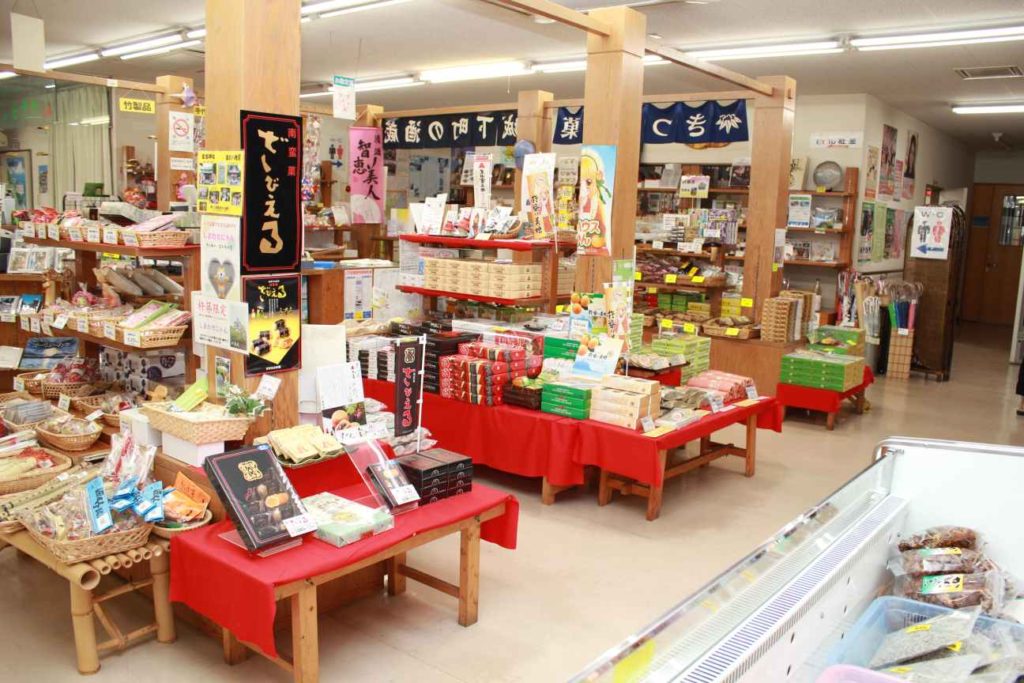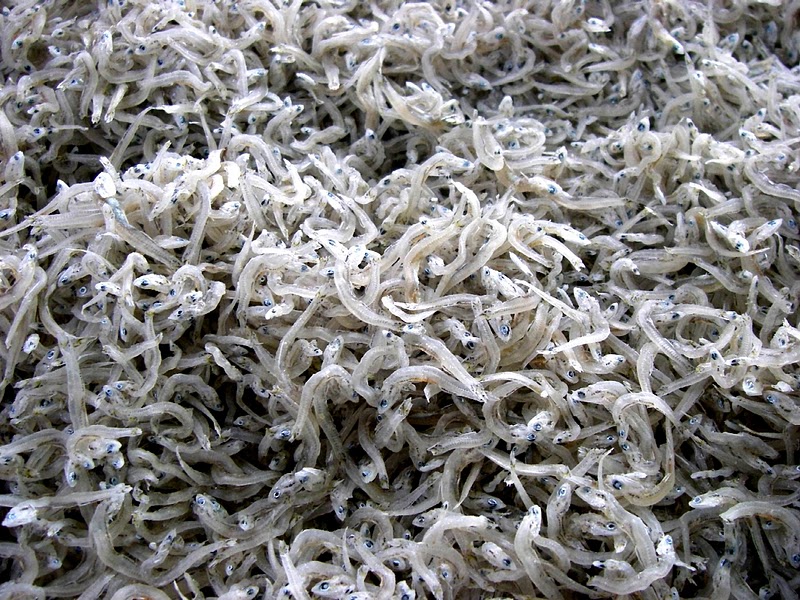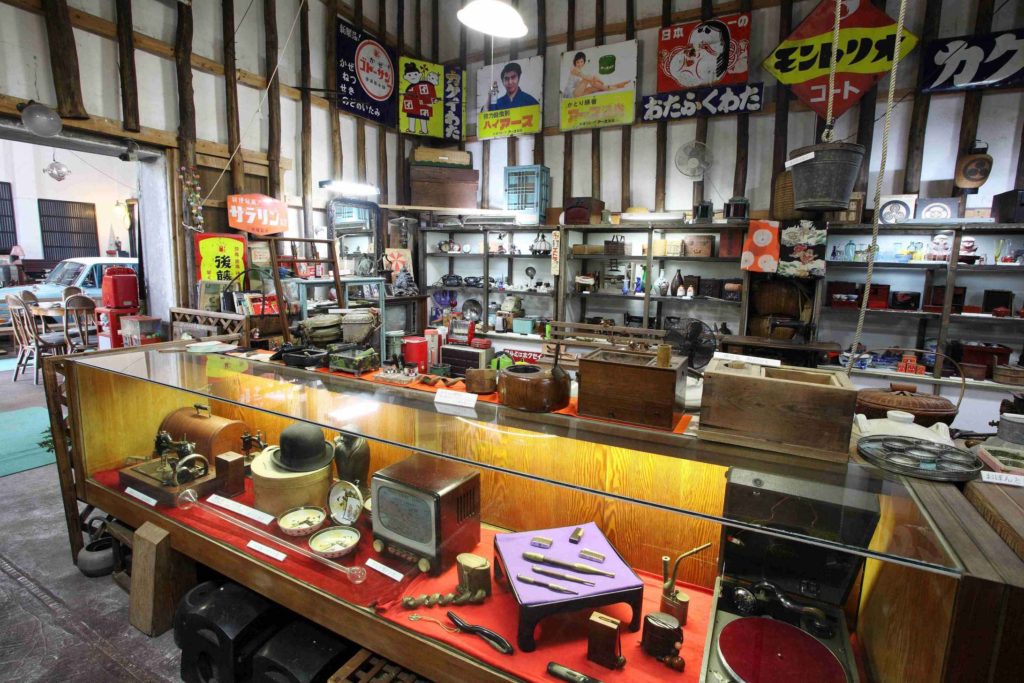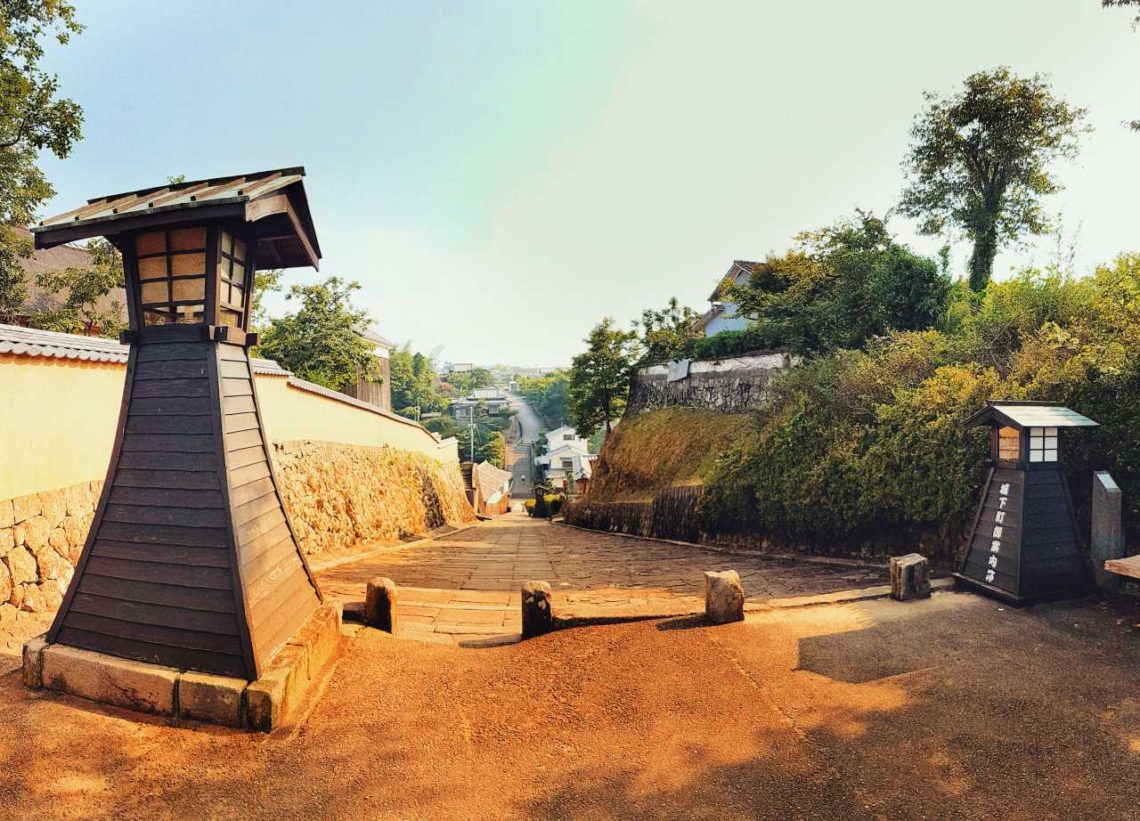
Kitsuki – A Comprehensive Travel Guide to the Sandwich Castle Town
Imagine a neighbourhood where samurai (侍) clans lived together as opposite neighbours. Introducing Kitsuki (杵築), a relatively authentic mini castle town, with a reputation as the hidden Little Kyōto (京都) in Kyushu (九州). Located in the Kunisaki peninsula (国東半島) in Kyushu, the town lies along the coast facing the Seto Inland Sea (瀬戸内海). It is the only sandwich castle town in Japan. To clarify its nickname, firstly, this town does not specialise in sandwiches.
Instead, the town has a unique townscape of having two samurai districts on its hills; both of them sandwiching a commercial district in the middle. Yet, Kitsuki (杵築) remains relatively unknown due to its rural location and often overshadowed by other commercial areas. So how does this mini castle town fares in comparison with other historical sites? Lets explore further to find out.
Table of Contents
History
Kitsuki roots began back in the 12th century militaristic Kamakura period (鎌倉時代). A band of brothers from the Ōtomo clan (大友氏) decided to branched out of their clan due to overexpansion. Afterwards, they converted their family name to Kitsuki (木付) and settled down in a little village in the Bungo province (豊後国), presently Ōita Prefecture.
Eventually, the clan named the village Kitsuki (木付) too and built the small yet sturdy Kitsuki Castle (杵築城) in 1394, which provided a sturdy fortification to the town. Unfortunately, the clan ultimately met its end in 1593 when the clan committed suicide after hearing the lost of their heir in the military campaign against the Koreans.
In the 17th century Edo period (江戸時代), the Matsudaira clan (松平氏) took over the administration and revamped it into an economic center. Later on, various samurais (侍) settled down here and established their households.
Additionally, the administrators also changed the kanji (漢字) characters of the name from 木付 to 杵築. Kinda like a rebranding except this one was due to a spelling mistake in one of their stamps.
After the Edo period, it was absorbed into the Ōita Prefecture (大分県) and became part of it. Today, it remains one of the best preserved castle towns and THE only sandwich town in Japan. To find out more what makes this castle town special, lets explore further to find out, shall we?
Exploring Kitsuki
Firstly, Kitsuki being a town itself has plenty of attractions for all kinds of travelers to explore. Rustic residences, historical sites, unique café ambience and shopping spots; all in all a wonderful place to explore. Furthermore, the authenticity of the streets and the samurai (侍) residences in the area, with the lack of tourists makes it a peaceful spot to relax your mind.
Interested in getting to know this authentic samurai town better? Then, click on the below buttons based on your interests.
But First, Kimonos in Kitsuki
Before we begin our wonderful journey in Kitsuki, did you know you can rent a traditional kimono (着物) and explore the town? That’s right! The Warakuan (和楽庵) offers kimono rental services which you can rent for a day. This presents plenty of wonderful photo opportunities around town, while providing a surreal experience of being transported back to the Edo period (江戸時代) as you walk along the streets.
Editor’s Note:
For a generous 3,000 yen, you get to choose from over 350 styles with the assistance from the friendly staff to wear the attire. Additionally, you are entitled to free admissions for all attractions in Kitsuki together with discounts at certain outlets in town. If you are interested, click here to make a reservation 3 days before going there to ensure priority service which will save you waiting time.
For The Architecture Lovers
The Ōhara Residence (大原邸)
Once this residence belonged to the Ōharas, a rich samurai families in town. Evidently, this lavish house contains a thatched roof architecture; a style requiring highly specialised labour and materials to construct. Additionally, it also has one of the most spacious gardens among the residences, further signifying as the richest family in the neighbourhood. Additionally, I will be covering more on the inside of these samurai residences, so be sure to subscribe to my blog for future updates.
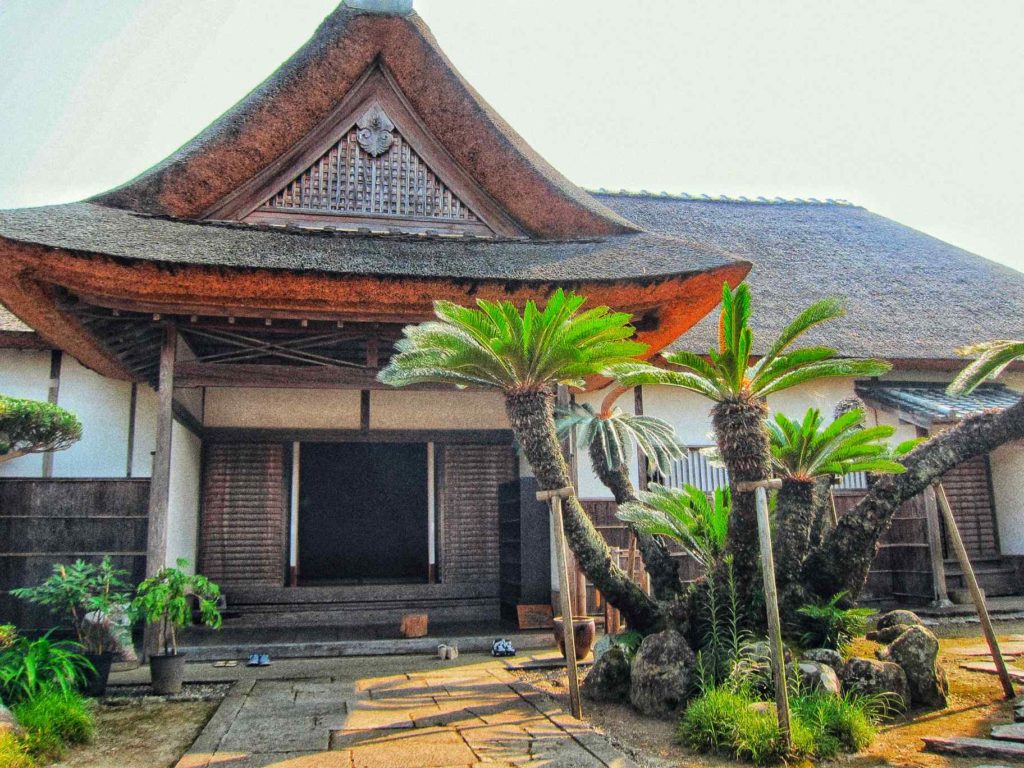
Ocha no Tomaya (お茶のとまや)
With a history of over 280 years, this liittle teahouse is one structure architects and interior designers should not miss. Particularly its architecture of being built entirely out of wood with minimal nails was so unique that it earned its recognition from the government as Tangible Cultural Property (有形文化財建造物). One should not miss out of this rare treasure when visiting Kitsuki, especially having a sip of tea while admiring its authentic interior design as well.
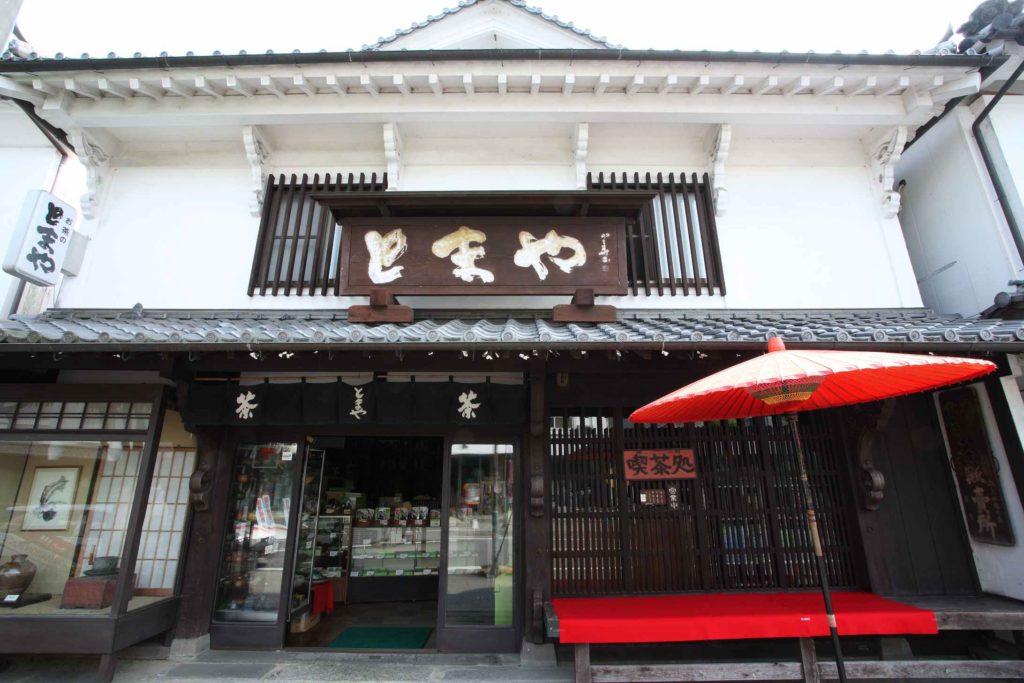
Great Places For Photos in Kitsuki
Kitsuki Castle (杵築城)
Japan’s official smallest castle holds a distinct charm of being the cutest among its brethren; while boasting a stunning panoramic ocean view. Formerly the spot where the castle lord observes for incoming ships, today it offers a mesmerising scenery that Instagrammers and photographers would die for to snap a shot. Are you interested and planning to visit the castle? Then, be sure to check out my separate articles on Kitsuki Castle’s hidden history and also important tips on travelling there.
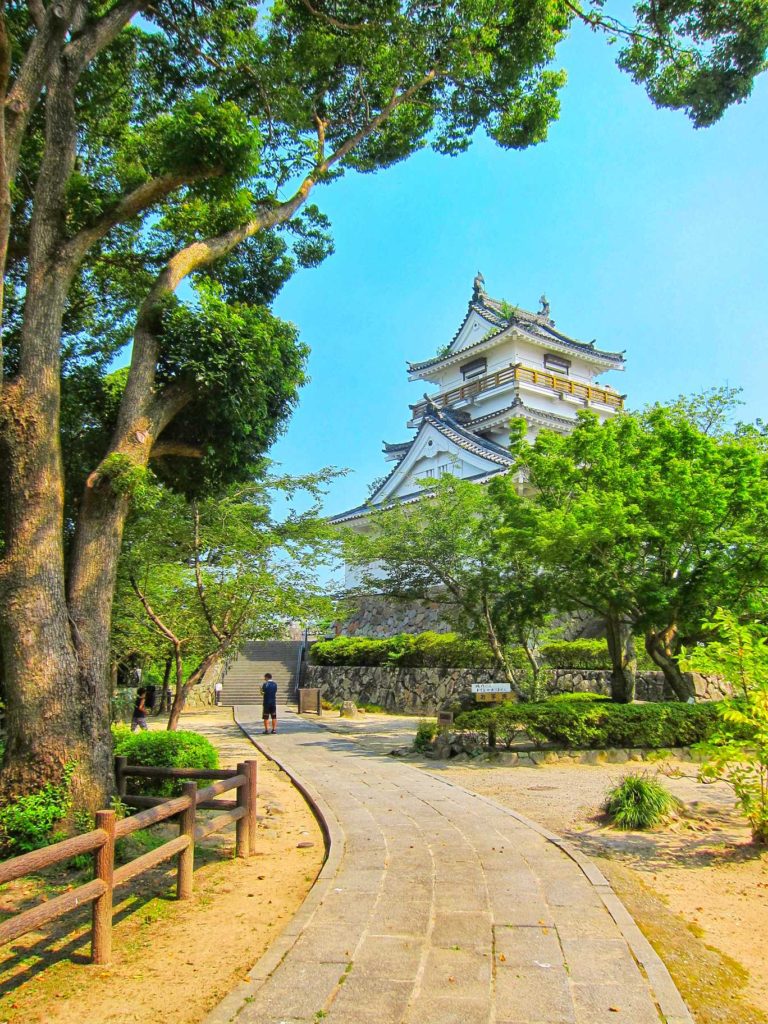
Suya no Saka (酢屋の坂) & Shioya no Saka (塩屋の坂) Slopes
The two poster boy slopes of Kitsuki; the former means ‘Slope of the Vinegar Shop’ while the later is ‘Slope of the Salt Shop’. Both got their name respectively from a vinegar and salt shop that used to exist near the slopes. Evidently, they are some of the best spots in Kitsuki to snap an Instagram photo, especially if you managed to rent a kimono (着物) for a day. One could imagine being greeted by a pair of ballerinas as you stroll leisurely along these graceful slopes.
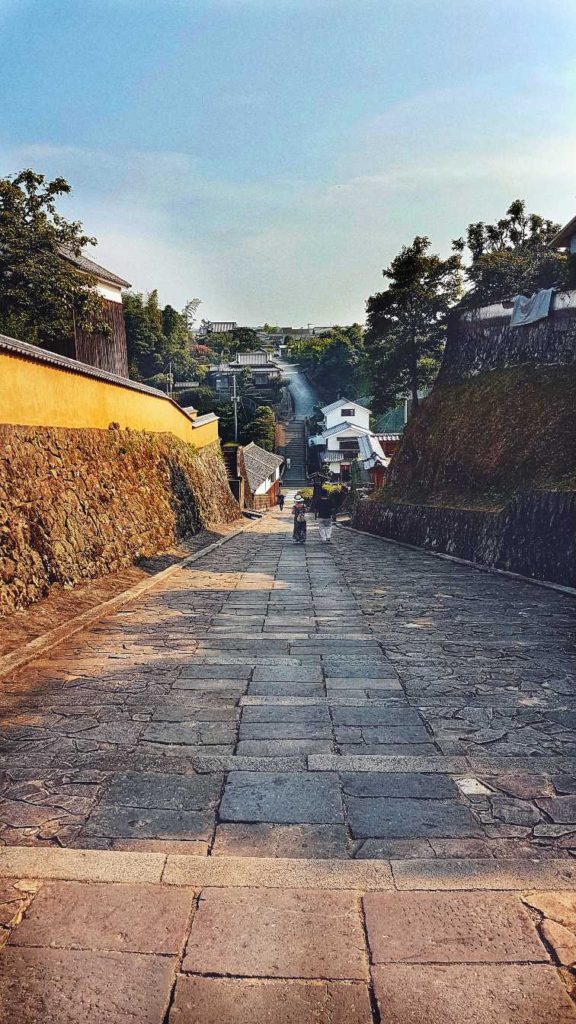
Additionally, if you are keen to discover more mesmerising photography spots, be sure to check out the best photography spots around Kitsuki for more info.
Those Who Enjoy Museums And Arts
Kitsuki History Museum (きつき城下町資料館)
Alternatively known as Kitsuki Jōka Machi Shiryōkan, is a mini-museum located in the Southern District. This 3-storey museum features an archive of artefacts from the old town, and also a miniature model which portrays what Kitsuki looked like back in the Edo period (and also a great air-conditioned place to escape the heat in summer). Also in display is lavish bullock cart (goshoguruma/御所車) that is paraded every year on 24th-25th July during the annual Tenjin festival (天神祭).
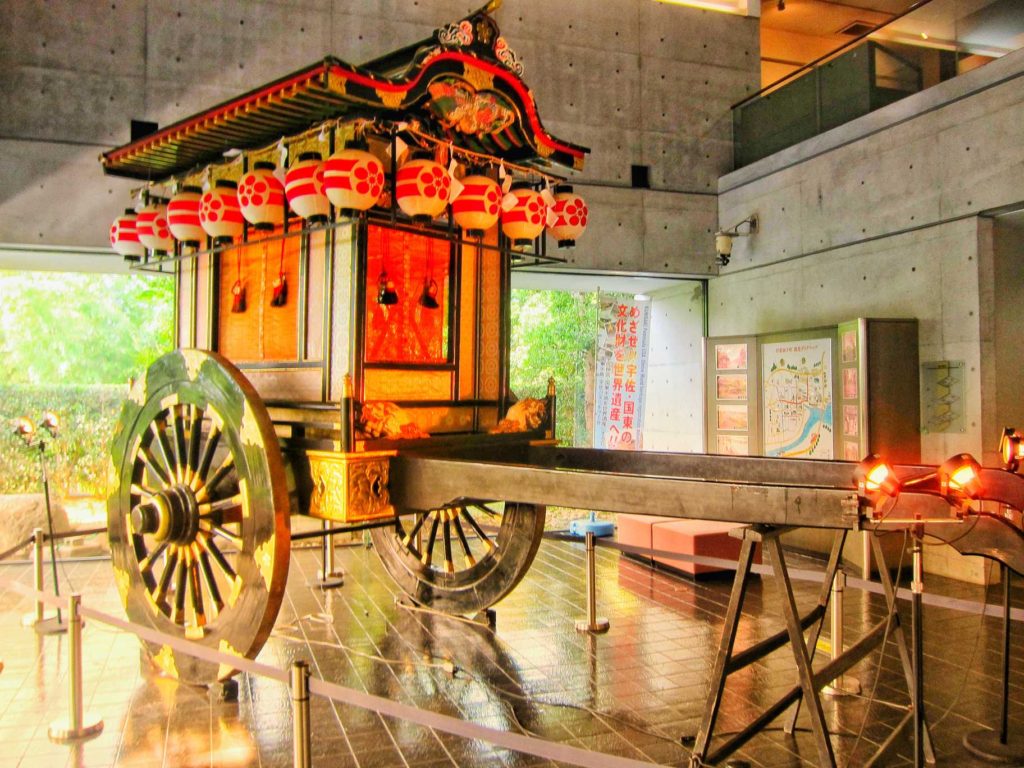
The Isoya Residence (磯矢邸)
Once a small and humble residence of a samurai called Katō Yogoemon (加藤与左衛門). Known for its relaxing ambience as it once served as a rest house for the castle lord. Additionally, it also houses a mini museum featuring a rare collection of suibokuga (水墨画), the ancient art of brush painting that focuses on spirituality and elegance. Great place to check out for the art lovers and for those desiring a break from walking.
For The Café Hoppers And Foodies
The Nomi Residence (能見邸)
A former samurai residence to the Nomi clan (能見氏), and the only one in Kitsuki that features a café inside it. Said café is called Dai no Chaya (台の茶屋), boasting a unique setup of a café inside a rustic samurai house, accompanied with a serene garden. This makes for a great spot for those who want to chill and experience in a traditional Japanese atmosphere. Moreover, they serve tasty desserts too including my favourite anmitsu (あんみつ), chilling agar jelly served together with fresh fruits and ice-cream.
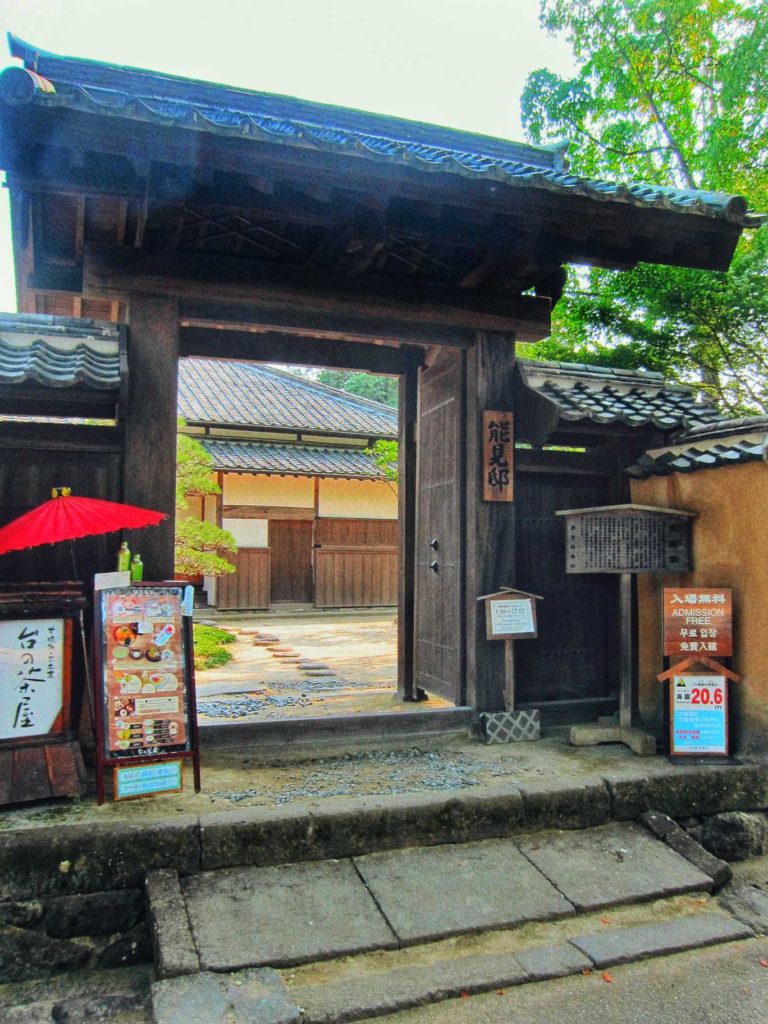
Wakaeya (若栄屋)
The traditional Kitsuki-exclusive dish Ureshino (うれしの) served in this little shop would certainly appeal the seafood lovers. This dish consists of sweet sauce marinated red snapper served with rice, savoury assortments and refreshing green tea. It was formerly the local feudal lord’s favourite dish which made him uttered the phrase ‘ureshii no/嬉しいの’ meaning ‘I am delighted’. Said phrase subsequently became the delicacy’s name and today without a doubt, remains as Kitsuki’s pride and joy delicacy.
Furthermore, if you would love to know more about Kitsuki’s delicacies, subscribe to this blog as I will cover them in a future article.
If You Are Into Shopping and Souvenirs
Kitsuki Furusato Sangyōkan (杵築ふるさと産業館)
Located a minute’s walk from Kitsuki Bus Terminal (杵築バスターミナル), the Kitsuki Furusato Sangyōkan offers a wide variety of goodies for those who look forward to souvenir shopping before going back. Don’t miss out on the local specialty Chirimen (ちりめん), dried savoury baby sardines that goes wonderfully well with blue cheese. Moreover for the fans of sake (日本酒), look out for the award-winning brand Chie Bijin (智恵美人/ちえびじん); known for its sweet and mellow flavour which gives you a warm comforting feeling as you sip.
Manrikiya (萬力屋)
Are you looking for some attractive Japanesque souvenirs? Then, check out the Manrikiya (萬力屋), one of the few remaining shop from 1877 producing wooden kitchenware using an exclusive technique known as bent wood (magemono/曲げ物). This technique not only improves the sturdiness of the product, but also said to enrich the flavour of the delicacies. Be sure to check out their little cute wooden circular steamers (seiro/せいろ), traditional cooked rice containers (ohitsu/おひつ) and traditional sandals (zōri/草履).
Off The Beaten Track Locations in Kitsuki
Kitsuki Retro Museum/Kitsuki Retoro-kan (杵築レトロ館)
An eccentric museum located at a former rice granary nearby the Kitsuki Castle (杵築城). It houses many antiques from the Shōwa (昭和) period, aka the post-World War 2 era (1950s to the 1980s). These include old fashioned radio boxes, rotary dial phones, spin wheel machines and even a small antique car; making you feel like you are visiting a junkyard instead of an actual museum. Definitely a lovely place to hang around for those who have a strong nostalgia from the baby boomers era.
How To Travel To Kitsuki
By Train
Kitsuki is undoubtedly well-connected via the Nippō Main Line (日豊本線) by the JR Sonic (JRソニック) train.
Editor’s Note:
Travelling via train is very convenient; but can also be very costly and most likely will make up 50% of your travel expenses in Japan. If you are keen in visiting Kitsuki together with other parts of Japan, I would suggest the Japan Rail Pass or JR Pass (ジャパンレールパス); a convenient all-you-can-ride pass that allows you to ride on all JR lines in Japan including the JR Sonic on the Nippō Main Line. A wonderful option especially if you are travelling extensively around the country. Check out the JR main page to learn more of this pass.
Firstly, you must disembark at Kitsuki station (杵築駅).
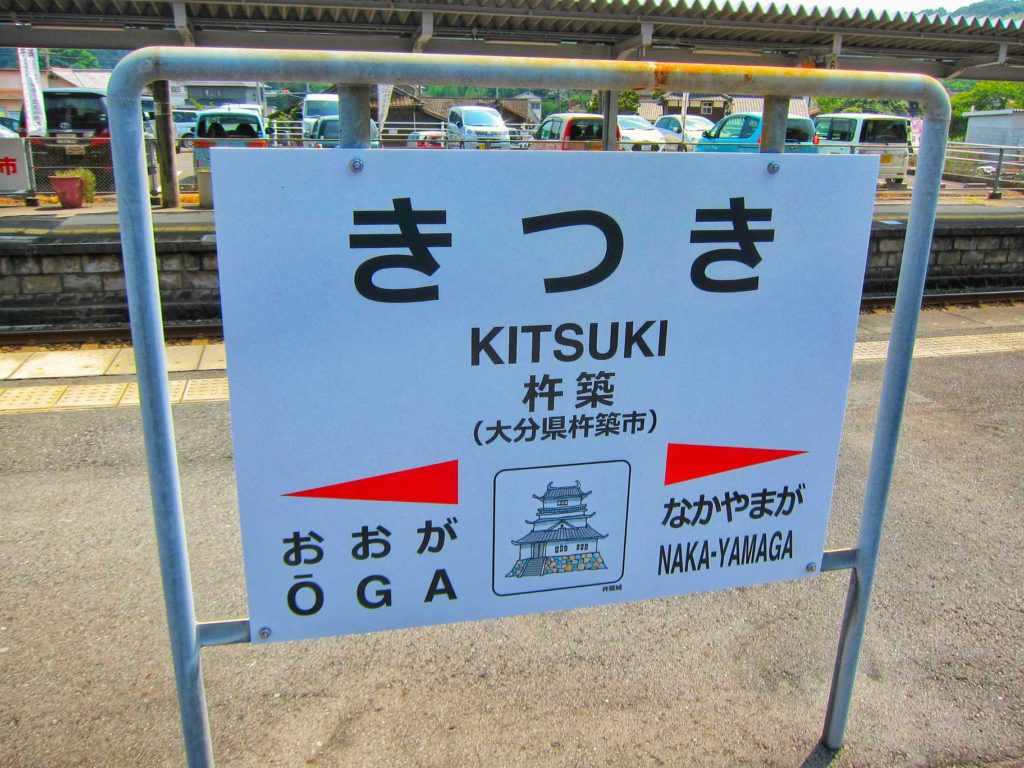
Afterwards, board the Kunisaki Kankō Bus (国東観光バス) from the bus stand outside the train station. From then on, the ride takes about 10 – 15 minutes and cost 290 Yen (as of 31st Mar 2021). Then, disembark at the Kitsuki Bus Terminal (杵築バスターミナル).
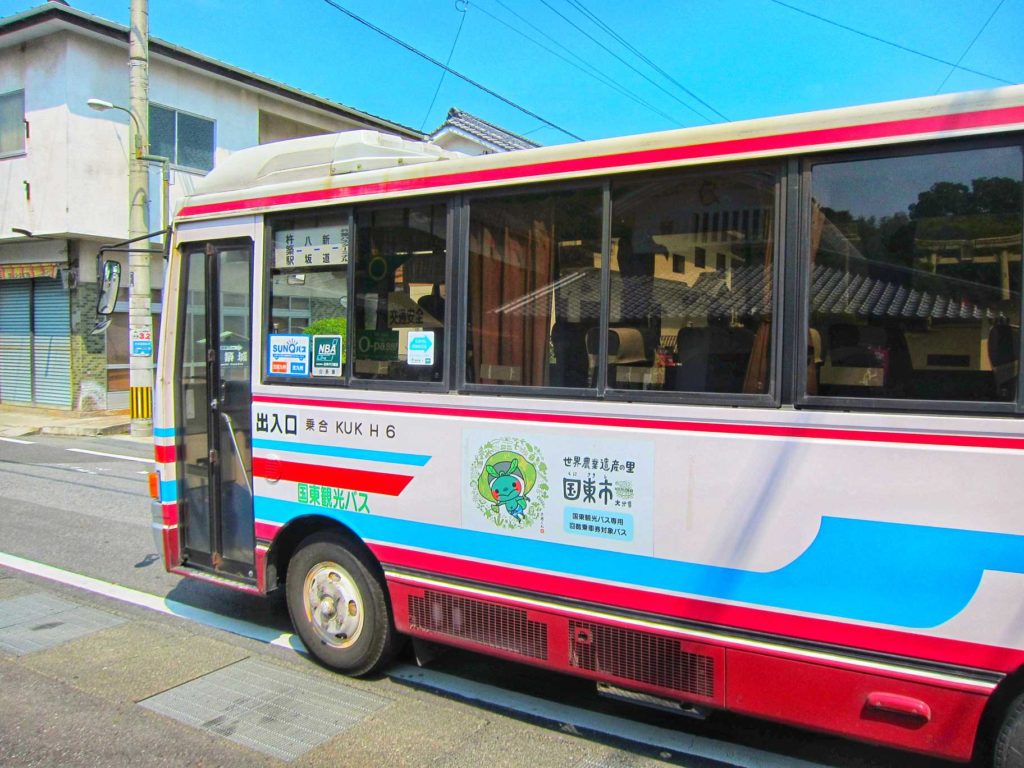
However, do note the buses generally run once in each hour which may be inconvenient for those who wish to travel leisurely. If you are looking for more flexibility, consider this next option.
By Car
Alternatively, you can opt to rent a car to explore deeper into the countryside and the beautiful mountains of Kyushu. Additionally, its a great option for those who wish to bring along their families or a group of friends. Furthermore, Kitsuki has a variety of interesting places, some which can only be accessed via car; all the better reason to rent one.
Editor’s Note:
A friend of mine used Tocoo; Japan’s leading rental car website which is reliable and provides a wide selection of cars, ranging from small economical cars to the big family ones with affordable rates. Are you unsure of getting the necessary license and familiarising with the rules of driving in Japan? Fret not as they provide comprehensive and elaborate guides in their site on what you need to start your driving journey in Japan. Click here to embark on a wonderful journey of driving through the countryside of Japan.
Admission Fees at Kitsuki
- As shown above, these are the admission fees for each attractions in Kitsuki (as of April 2021).
- In summary, total per adult to visit all these places is 1,750 Yen. However, you can save 550 Yen per pax (for some budget for souvenirs) by purchasing the All-Access Ticket (共通観閲券).
- In order to purchase this ticket, simply go to the Kitsuki Tourist Information Center (杵築観光案内所), located inside the Kitsuki Furusato Sangyōkan (杵築ふるさと産業館).
- Alternatively, you can opt to rent a beautiful kimono instead and access all the above venue for free.
Timing of Attractions in Kitsuki
- Firstly, attractions in Kitsuki open from 10 am to 5 pm daily. However, there are several attractions that closes on certain days (Tuesdays – Thursdays) as shown above.
- Because of this, you may want to visit Kitsuki on Mondays, Fridays and the weekends. Particularly, Mondays and Fridays are better options for those who wish to avoid crowds.
- Also, AVOID visiting during New Year’s period, as 90% of the attractions will be closed during this period (29th Dec – 3rd Jan especially).
Overall Thoughts
Would I recommend checking out Kitsuki in your travels? In-short, absolutely! Unlike Kyoto, Kitsuki has its own charm of not being overly crowded and offers plenty of photo opportunities, even for Instagrammers (those lovely slopes especially). Similarly to taking your time savouring a tasty sandwich, a day’s trip is the best way to explore the sandwich castle town; with ample time to explore and soak into the atmosphere. If you are around Kyushu, make sure not to miss out this adorable sandwich town.
Loving the content here?
Subscribe and get your free hidden gems in Japan bucket list here.
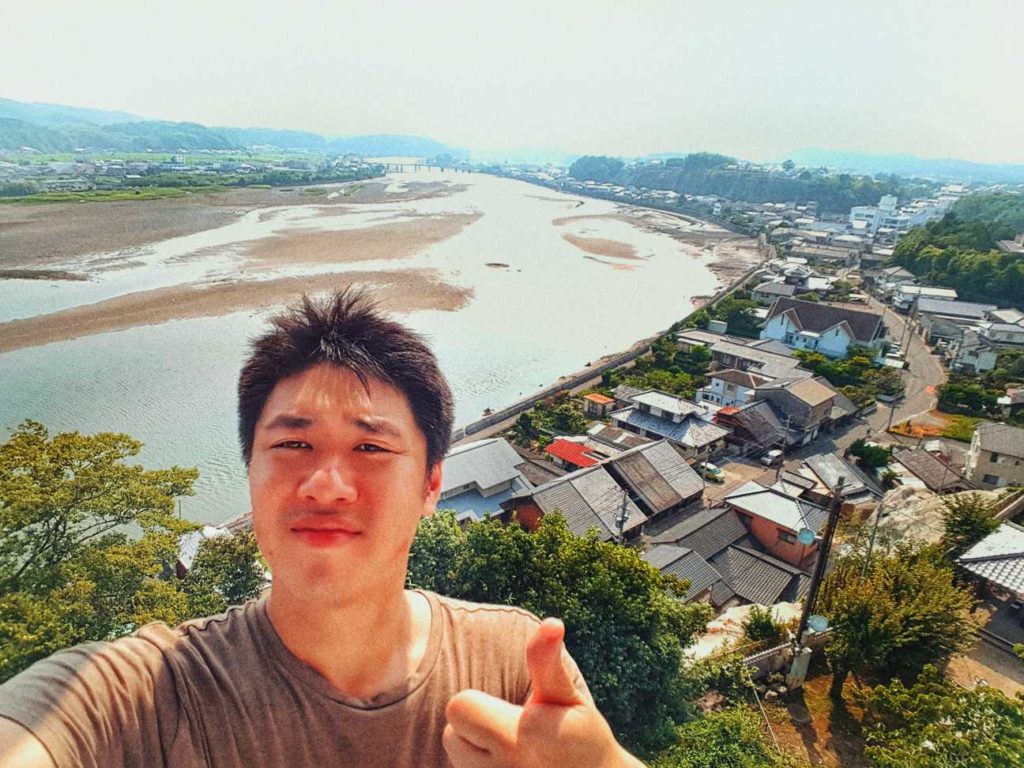


You May Also Like

Hikone Castle – The Ultimate Travel Guide & Must-Know Hidden Tips
December 14, 2024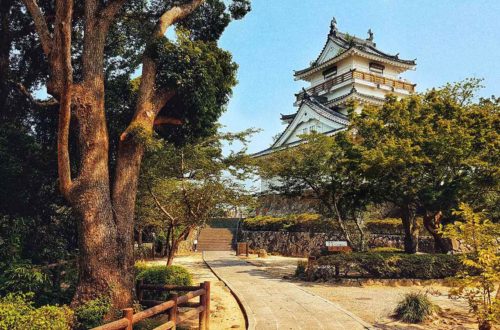
Kitsuki Castle – A Complete Travel Guide To Japan’s Smallest Castle
May 10, 2021